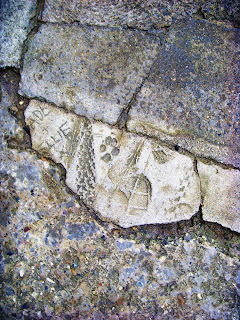Ray's voice was heavy with irony... "No one watches Mercer; that's the whole point." Tossing his cigarette into the fireplace, he strode to the TV set; there, before it, Joan saw a metal box with two handles, attached by a lead of twin-cable wire to the TV set. Ray seized the two handles, and at once a grimace of pain shot across his face.
"What is it?" she asked, in anxiety.
"What is it?" she asked, in anxiety.
"N-nothing." Ray continued to grip the handles. On the screen, Wilbur Mercer walked slowly over the barren, jagged surface of a desolate hillside, his face lifted, an expression of serenity - or vacuity - on his thin, middle-aged features... To Joan, he explained, "This is the empathy box, my dear... when you take hold of these handles you're no longer watching Wilbur Mercer. You're actually participating in his apotheosis. Why, you're feeling what he feels."
Mercerism is a prominent religious/philosophical movement on Earth. The movement is based on the legend of Wilbur Mercer, a man who lived before the war. Adherents of Mercerism grip the handles of an electrically powered empathy box, while viewing a monitor which displays patterns that are meaningless until the handles are gripped. After a short interval the user’s senses are transported to the world of Wilbur Mercer, where they inhabit his mind in an experience shared with any other people using an empathy box at that moment.
Mercerism blends the concept of a life-death-rebirth deity with the values of unity and empathy. According to legend, Mercer had the power to revive dead animals, but local officials used radioactive cobalt to nullify the part of his brain where the ability originated. This forced Mercer into the “tomb world.” He strives to reverse the decay of the tomb world and ascend back to Earth by climbing an enormous hill. His adversaries throw rocks at him along the way (inflicting actual physical injuries on the adherents “fused” with Mercer), until he reaches the top, when the cycle starts again… — Wikipedia
















































